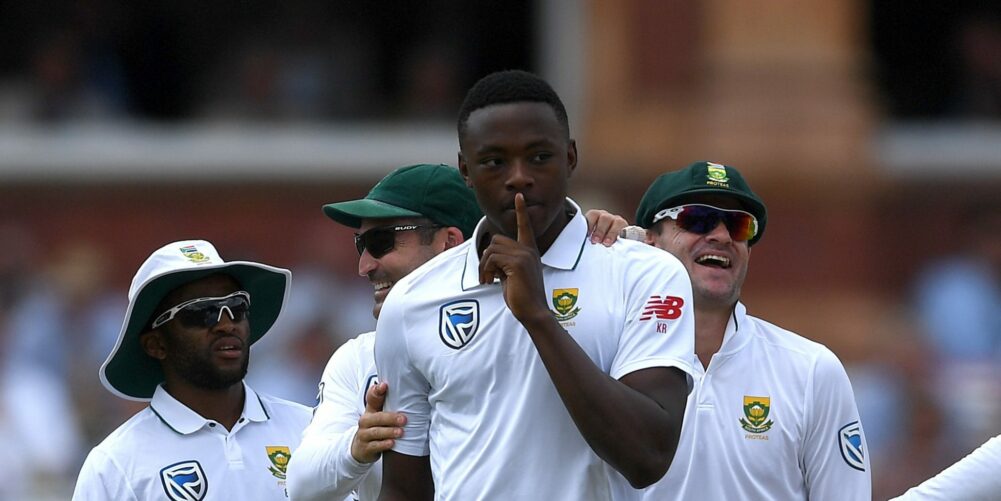By Peter Hayter
Call me a Luddite… No, really, call me a Luddite, please, because if, in the context of television coverage of cricket, being one of them means I am opposed to the use of new technology which threatens to suck the blood out of it or, on occasions, actually interferes with the action and risks materially affecting the outcome of a match then, unashamedly, unapologetically, unreservedly, count me in.
Don’t get me wrong.
I grew up watching matches being covered in black and white, by a single TV camera operating from one end, which meant that while you had a fair idea of what was going on when the batsman was facing it, when he was looking the other way pretty much everything that took place once the bowler released the ball was and remained a complete mystery. For those younger than Noah take a look at film of Ian Botham’s 1981 Ashes for reference.
And Denis Compton cannot have been the only one fooled by the first use of BBC TV’s ground-breaking “Action Replay” into thinking he had just seen the same batsman bowled by the same bowler two balls running, only very much more slowly the second time round.
So I am completely in favour, not to mention awe, of the mind-blowing presentation of cricket by Sky and all other global broadcasters and their super slo-mo replays that emphasise the fun, drama, life and dreams of the game as well as the skill, brains and technique required to play it at the highest level.
For good or ill, and despite genuine and long-standing doubts over the Decision Review System, further resistance seems merely futile.
But the examples of Kagiso Rabada and Vernon Philander from the first match of the Investec Test series at Lord’s suggested the time may have come to say to the boffins, tv companies and, indeed, world cricket’s governing bodies, turn off the machines before it is too late to stop them and, for my money, they could do worse than start with stump mics, spider-cam and “in-yer-face-cam”.
Take the case of Rabada, banned from taking part in the second Test at Trent Bridge and fined 15 per cent of his match fee after picking up a fourth “de-merit” point when language he used after dismissing Ben Stokes was picked up by a stump microphone. (The other three DMPS had been imposed following a coming together with Sri Lanka’s Nrioshan Dickwella in Cape Town, which, to the naked eye at least, also looked somewhat harsh.)
Ye Gods. Bowlers swearing at batsmen? What next? Batsmen not walking?
In the immediate aftermath of the announcement, opinion was divided, but broadly in favour of the perpetrator of this apparently heinous crime.
Former Proteas skipper Graeme Smith called the ban ridiculous, a view shared by ex-England captains Kevin Pietersen and Michael Vaughan, whose comment “Give me a break” summed up the views of many.
Shaun Pollock was sympathetic to Rabada but backed the suspension for the reasons underlined by Jimmy Anderson at the end of the day’s play.
“I like to see bowlers playing with aggression and passion,” said England’s leading wicket-taker, “which he obviously does. The scrutiny we’re under now with stump mics and spider-cam, you can’t get away with anything. There is a line that the ICC has drawn and you’ve got to stay the right side of it.”
Maybe so and, for the worst excesses of verbal and even physical abuse of players and officials, moves to introduce red cards and appropriate penalties are sensible and overdue.
But the fact is that if stump mics are allowed to dictate what can and cannot be said in the heat of the battle, the blood and thunder that has always given the game moments of compelling drama would be lost forever, not to mention some of the humour as well.
Imagine Dennis Lillee restricting himself to words heard only in the Bible, or Sir Ian Botham, Jeff Thomson, Merv Hughes or Shane Warne.
Cast your mind back further and think of Fred Trueman being effectively gagged by the censors.
Not only would you have missed his capacity for turning the air blue, but you might also never have heard (in the retelling, not through onfield technology) the following exchange from a Test match in the early 1960s.
Trueman induces a thick edge which the Reverend David Sheppard not only fails to catch but also allows to travel to the boundary unhindered.
“Sorry, Fred,” Sheppard tells Trueman, “I should have kept my legs together.”
“Not you, Reverend,” says Fred.
“Your mother.”
One can only imagine what Fiery Fred would have made of spider-cam, had, as in Philander’s case when trying to end the second innings of Jonny Bairstow on seven out of a match-securing 51, that hovering menace got in his eye line when he was trying to take a vital catch on the long-off boundary. Philander’s name is just the latest on a growing list of those put off by the pesky thing.
Back in 2015, Australia’s Steve Smith missed a catch in similar circumstances during the Sydney Test against India when it distracted him in his attempts to catch KL Rahul off Shane Watson.
In England’s opening match of the ICC Champions Trophy against Bangladesh at The Oval, Ben Stokes found it bothering him when he prepared to catch Shakib Al Hasan. At Lord’s both Alastair Cook and Joe Root had occasion to back away when the robot-insect came buzzing so close as to be an invasion of privacy.
While they are at it, the powers-that-be really could do us and the players a favour by ridding the game of the “in-your-face-cam” before the bat of someone making their way back to the hutch after a first-baller inadvertently slips from his grasp and straight through that expensive piece of equipment.
And don’t get me started on BatSense, the data collecting technology that lets us know in minute detail about bat speed, angle of the back lift (eyes glazing over), angle of bat on ball (finding it increasingly difficult to maintain focus), speed when the bat hits the ball (zoning out).
“A simple game made complicated by those who should know better,” said Liverpool legend Bill Shankly of football.
No doubt they called him a Luddite, too.












